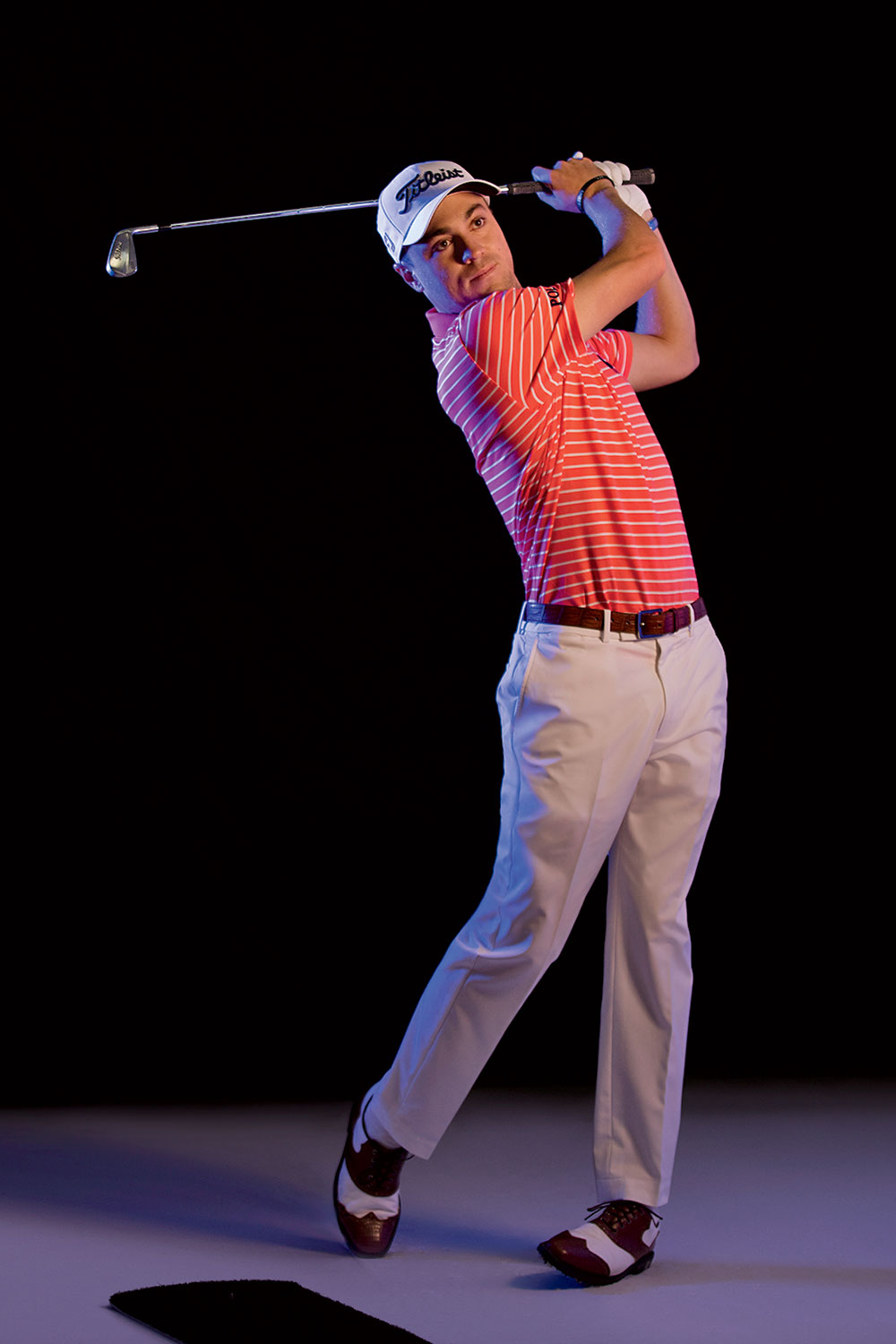Down the stretch on Sunday at the PGA Championship, there were a lot of big moments. The putt that hovered on the lip before falling at 10, the chip-in on 13; you can’t win a tournament with one swing. That being said, there was one that stands out. On the tee at No.17 with a one-stroke lead, I couldn’t ask for a better yardage. It was 233 yards to the flag – a perfect 6-iron. But I told my caddie, Jimmy Johnson, to give me the 7-iron. I was so amped up, I knew I could get it there – and I was right. I hit it to 16 or so feet, made the birdie putt and pulled away for my first Major. I’ll remember that tee shot for the rest of my life, especially how I visualised it and then hit it.
 There are times when you might not feel good about your swing; when the pressure of the situation can make you feel funky. It’s at those moments when you should remember this: clear your mind, see the shot, and then make a confident swing. It might not work out exactly as you saw it, but if you commit to what you’re doing, you’ll give yourself the best chance of success on any shot. Don’t waver.
There are times when you might not feel good about your swing; when the pressure of the situation can make you feel funky. It’s at those moments when you should remember this: clear your mind, see the shot, and then make a confident swing. It might not work out exactly as you saw it, but if you commit to what you’re doing, you’ll give yourself the best chance of success on any shot. Don’t waver.
When I see amateurs come to a hole with a tight landing area or have to carry the ball over water, their swings reflect uncertainty. They look short, rushed and tight. They’re all arms, trying to steer the ball to a safe spot. If that sounds like you, try this instead.
 First, get your body matched up. Make sure your shoulders, hips and feet are where you want them to be as you address the ball. I work on this all the time. You’d be surprised how easy it is to get out of whack with your alignment. And when that’s off, you’ll need to get lucky by making a split-second adjustment to your swing to save the shot. Good luck with that.
First, get your body matched up. Make sure your shoulders, hips and feet are where you want them to be as you address the ball. I work on this all the time. You’d be surprised how easy it is to get out of whack with your alignment. And when that’s off, you’ll need to get lucky by making a split-second adjustment to your swing to save the shot. Good luck with that.
Second, finish your backswing. For some of you, the rotation of the upper body while the lower body resists might not be as noticeable as you see here [top left]. That’s OK. Just turn back as well as you can. In nervous situations, I see a lot of golfers afraid to turn, thinking they might not hit it solid if they do. See if you can swing back until your left shoulder is pointing at the ball like it is here. You can rehearse this by placing a club across your chest and making backswings until the shaft is pointing at the ground. Remember that feel when it’s go time. Another thing I see in pro-ams is a rush to get the backswing over with. Take your time to keep your swing in sync.
If you make a full turn and don’t rush back, you’ll be in the best position to make a good downswing. There’s not much you can think about then, but if there’s one thing I’d say will help you pull off the shot, it’s don’t overswing. Just as tension can cut your backswing short, it also can make you swing with more effort than you normally do. If you’re a slicer, you might over-rotate – too much body turn too soon – and slice it worse than normal. Don’t get me wrong, you want to complete your swing likeI am here [bottom left], but think more about finishing in balance. Believe me, you’re gonna want to hold this pose when you stick it close.
—with Ron Kaspriske



